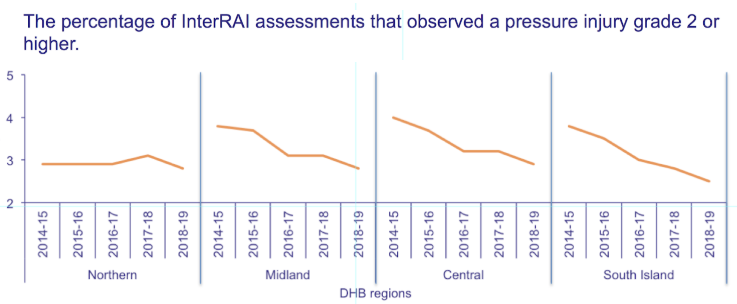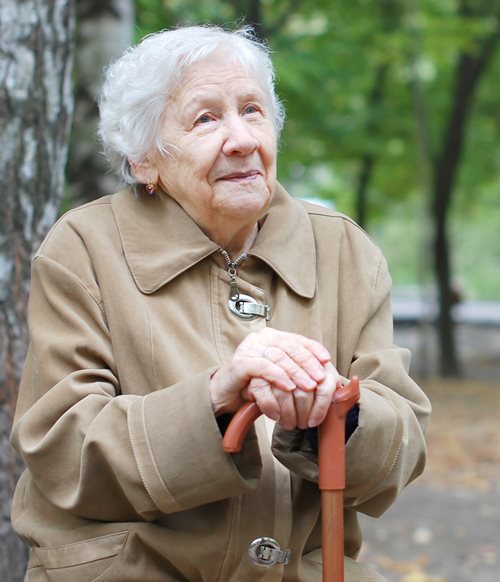Care-Metric is the new agent for MOA Benchmarking in New Zealand
 MOA is an online Quality Improvement Platform used by a large number of aged care facilities in Australia. The platform allows aged care providers (they call them partners) to self-assess and benchmarks their current performance against the standards, their past performance, and that of other providers using this platform. This highlights risk and improvement opportunities that can be tracked and monitored in this digital platform for continuous improvement. Care-Metric is proud to be the new agent for MOA in New Zealand.
MOA is an online Quality Improvement Platform used by a large number of aged care facilities in Australia. The platform allows aged care providers (they call them partners) to self-assess and benchmarks their current performance against the standards, their past performance, and that of other providers using this platform. This highlights risk and improvement opportunities that can be tracked and monitored in this digital platform for continuous improvement. Care-Metric is proud to be the new agent for MOA in New Zealand.
Eighty year olds are a blind spot in tackling coronavirus
 Covid-19 has had a devastating effect on the elderly. Sometimes, as our body changes with age, symptoms can change as well. If we are not aware of this, early signs can be missed and delay intervention. Here is a translated interview with Professor Marcel Olde Rikkert, Professor of Geriatric Medicine at the Radboud University and hospital, The Netherlands, on this issue.
Covid-19 has had a devastating effect on the elderly. Sometimes, as our body changes with age, symptoms can change as well. If we are not aware of this, early signs can be missed and delay intervention. Here is a translated interview with Professor Marcel Olde Rikkert, Professor of Geriatric Medicine at the Radboud University and hospital, The Netherlands, on this issue.
Benchmarking with InterRAI data
 Benchmarking is often portrayed as an instrument to stimulate learning and improvement, but quite often the opposite is the case. The standard bar graph, presenting data from low to high with the median as a line across, often conveys false messages. The key to reading your information in a useful way is to understand how variation works.
Benchmarking is often portrayed as an instrument to stimulate learning and improvement, but quite often the opposite is the case. The standard bar graph, presenting data from low to high with the median as a line across, often conveys false messages. The key to reading your information in a useful way is to understand how variation works.
Aged care facilities are doing a better job!
Care-Metric, in collaboration with the DAA Group and Massey University, has undertaken a study of audit results for aged care services. The results demonstrate that compliance with standards of care in aged care facilities has improved over four years. The study, published in Kai Tiaki Nursing Research, looked at 185 aged care facilities that were audited in 2016 and compared the results with their previous audit.
Are pressure injuries on their way out?
Pressure injuries are still a hot topic in New Zealand. Care-Metric was interested to find out whether the problem was increasing, stabilised or decreasing in the aged care sector. For this we studied the interRAI data, which is publically available here: https://www.interrai.co.nz/data-and-reporting/. In order to create a meaningful graph that tells this story, we created a panel graph that displays the percentage of interRAI assessments that observed a pressure injury grade 2 or higher per region since 2014.

Study tour to the Netherlands – April 2020
 The Netherlands is famous for its innovative approach to elderly care. Join us as we visit aged care facilities, hospitals and supporting organisations around the country, and share your experiences with other healthcare professionals. With the W.H.O. predicting two billion people aged 60 and over by 2050, and dementia set to triple in the next 30 years, we need to innovate. Come and see what The Netherlands is doing and the brilliant results they are achieving. This is Care-Metric’s fourth Healthcare Study Tour to The Netherlands, running from April 19-24 2020. You can find out more and read what people have said about our tours here.
The Netherlands is famous for its innovative approach to elderly care. Join us as we visit aged care facilities, hospitals and supporting organisations around the country, and share your experiences with other healthcare professionals. With the W.H.O. predicting two billion people aged 60 and over by 2050, and dementia set to triple in the next 30 years, we need to innovate. Come and see what The Netherlands is doing and the brilliant results they are achieving. This is Care-Metric’s fourth Healthcare Study Tour to The Netherlands, running from April 19-24 2020. You can find out more and read what people have said about our tours here.
Ethical questions in long term care
 In their daily work, healthcare professionals often have to deal with ethical issues and dilemmas. Yet it seems difficult to recognize and discuss these issues. How do you think about good care within your organization? The role of healthcare professionals has shifted. The patient has became more articulate and wants to have a voice in options around treatment. Ultimately, the key question is: what is good, appropriate care for this person, with this life story?
In their daily work, healthcare professionals often have to deal with ethical issues and dilemmas. Yet it seems difficult to recognize and discuss these issues. How do you think about good care within your organization? The role of healthcare professionals has shifted. The patient has became more articulate and wants to have a voice in options around treatment. Ultimately, the key question is: what is good, appropriate care for this person, with this life story?
200,000+ Dutch people using long term painkillers
 More than 200.000 Dutch people (1.2% of the population) used very heavy painkillers for an extended period in 2017. This is the conclusion of a new study from Zorgverzekeraars Nederland (a coalition of Dutch healthcare insurers), published in the Netherlands Journal of Medicine this month (April 2019). The study looks at people who have taken opioids for more than three months. Opioids — such as oxycodone and fentanyl — are highly effective against severe pain, but they are also highly addictive. Fentanyl is fifty times stronger than heroin. The study did not look at addiction rates: “Only claim data was looked at”, said a spokesperson for the group.
More than 200.000 Dutch people (1.2% of the population) used very heavy painkillers for an extended period in 2017. This is the conclusion of a new study from Zorgverzekeraars Nederland (a coalition of Dutch healthcare insurers), published in the Netherlands Journal of Medicine this month (April 2019). The study looks at people who have taken opioids for more than three months. Opioids — such as oxycodone and fentanyl — are highly effective against severe pain, but they are also highly addictive. Fentanyl is fifty times stronger than heroin. The study did not look at addiction rates: “Only claim data was looked at”, said a spokesperson for the group.
Elder care needs often unmet – NZNO report
 According to a new report from the NZ Nurses Organisation (NZNO), nearly 75% of staff working in aged care facilities feel there is insufficient time to look after residents in the way they deserve. The NZNO argues that staffing levels need to be reviewed, updated and made mandatory. Would this will solve staffing issues in the long run? What do seniors say? Care-Metric Ltd believes this issue as an opportunity to make sustainable changes. New small-scale living arrangements have a positive influence on staffing levels, as well as the well-being of seniors.
According to a new report from the NZ Nurses Organisation (NZNO), nearly 75% of staff working in aged care facilities feel there is insufficient time to look after residents in the way they deserve. The NZNO argues that staffing levels need to be reviewed, updated and made mandatory. Would this will solve staffing issues in the long run? What do seniors say? Care-Metric Ltd believes this issue as an opportunity to make sustainable changes. New small-scale living arrangements have a positive influence on staffing levels, as well as the well-being of seniors.
Backlash on pharmaceutical prices
 Two Dutch hospitals and a large pharmacy in the Netherlands are taking a stand against the mighty pharmaceutical industry. The three of them have decided to manufacture specific cancer drugs and offer it to patients at a fraction of the ‘normal’ price. For example, the drug firm Novartis manufactures Lutathera – a drug used for treating tumours in the gut – and asks 92,000 euros for a one of course of four injections. The two hospitals are now offering it for 16,000 euro. Their stand is being supported by the Dutch government. The Netherlands is an influential voice in Europe, with the European Medicines Agency based in Amsterdam (as a result of the Brexit vote).
Two Dutch hospitals and a large pharmacy in the Netherlands are taking a stand against the mighty pharmaceutical industry. The three of them have decided to manufacture specific cancer drugs and offer it to patients at a fraction of the ‘normal’ price. For example, the drug firm Novartis manufactures Lutathera – a drug used for treating tumours in the gut – and asks 92,000 euros for a one of course of four injections. The two hospitals are now offering it for 16,000 euro. Their stand is being supported by the Dutch government. The Netherlands is an influential voice in Europe, with the European Medicines Agency based in Amsterdam (as a result of the Brexit vote).
Rural homes closing down in the USA
 440 U.S. rural nursing homes have closed down or been forced to merge with others in the last decade, according to a recent report from the Cowles Research Group. The effect of this can be devastating for residents, their families and loved ones, who now need to drive up to 300 km to visit. The closures are being caused by reduced occupancy and staffing difficulties. Is this the future for New Zealand? In 2017 Care-Metric Ltd investigated the availability of nursing home rooms for people over 75 years. The funnel graph below shows that for every 6.6. people over 75 there was only one room available. Looking more closely at the graph we can also see that a number of DHB’s have only one room available for every 10 or more (ie the dots below the LCL line). Rural areas are affected most. With equal pay settlement bringing more closures we need to keep a close watch on our elderly and help them stay within their communities when they need to go into care.
440 U.S. rural nursing homes have closed down or been forced to merge with others in the last decade, according to a recent report from the Cowles Research Group. The effect of this can be devastating for residents, their families and loved ones, who now need to drive up to 300 km to visit. The closures are being caused by reduced occupancy and staffing difficulties. Is this the future for New Zealand? In 2017 Care-Metric Ltd investigated the availability of nursing home rooms for people over 75 years. The funnel graph below shows that for every 6.6. people over 75 there was only one room available. Looking more closely at the graph we can also see that a number of DHB’s have only one room available for every 10 or more (ie the dots below the LCL line). Rural areas are affected most. With equal pay settlement bringing more closures we need to keep a close watch on our elderly and help them stay within their communities when they need to go into care.

Note:
Rooms available in August 2017 was taken from the Healthcert website.
Population per DHB was taken from the Census 2013 data.




